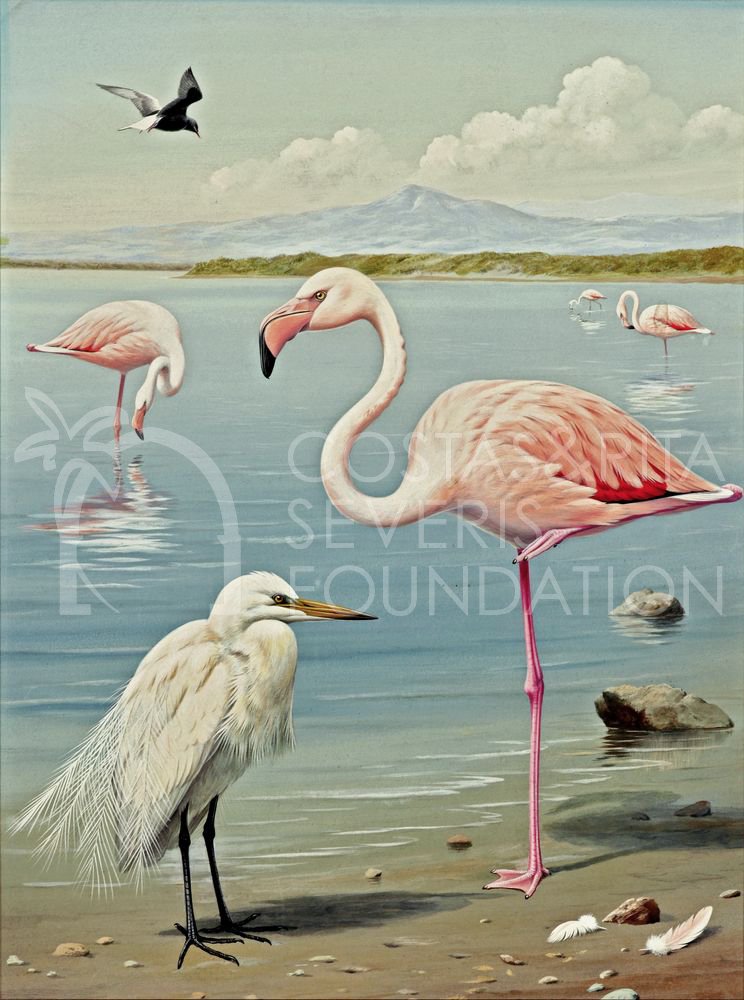Flamingos or flamingoes are a type of wading bird in the family Phoenicopteridae, which is the only extant family in the order Phoenicopteriformes. The name flamingo comes from the Portuguese or Spanish flamengo 'flame-colored'.
Flamingos usually stand on one leg with the other tucked beneath the body. The reason for this behaviour is not fully understood. One theory is that standing on one leg allows the birds to conserve more body heat, given that they spend a significant amount of time wading in cold water. While walking, a flamingo's legs may appear to bend backwards. This appearance is due to the middle joint on their legs being their ankle, not their knee. Flamingos also have webbed feet that aid with swimming. They can be seen stamping their feet in the mud to stir up food from the bottom. Flamingos are capable flyers, and when in captivity, often require wing clipping to prevent escape.
The greater flamingo is the tallest of the six different species of flamingos, standing at 3.9 to 4.7 feet (1.2 to 1.4 m) with a weight of up to 7.7 pounds (3.5 kg), and the shortest flamingo species has a height of 2.6 feet (approximately 0.8 m) and weighs 5.5 pounds (2.5 kg). Flamingos can have a wingspan as small as 37 inches (94 cm) to as big as 59 inches (150 cm).
Flamingos are very social birds; they live in colonies whose population can number in the thousands. These large colonies are believed to serve three purposes: avoiding predators, maximising food intake, and using scarce suitable nesting sites more efficiently. Before breeding, flamingo colonies split into breeding groups of about 15 to 50 birds. Both males and females in these groups perform synchronised ritual displays. The members of a group stand together and display to each other by stretching their necks upwards, then uttering calls while head-flagging, and then flapping their wings. The displays do not seem directed towards an individual, but occur randomly. These displays stimulate "synchronous nesting" and help pair up those birds that do not already have mates. While many different kinds of birds were valued items in Roman food, flamingos were among the most prized in Ancient Roman cuisine. Cyprus receives flamingos twice a year, usually at the salt lakes of Larnaca and Limassol. They are of the greater flamingo species.
PNT-00426 > David Reid-Henry (1919-1977), Flamingos, great White Egret, Great Black Turn at Salt Lake Larnaca, Cyprus, Watercolour, 37x27 cm, ca. 1956
PHT_12375 > Edmond Torikian, Larnaca Salt Lake, Chromogenic Color Negative, 7.1x8.4 cm, 20th century
MMR_00162 > Joseph Robinson of Buslen, Ironstone plate from the first dinner service used at the government house named “Cyprus” and inspired by the Salt Lake of Larnaca, Ceramic, 26 cm diameter, 1879
© Costas and Rita Severis Foundation
The 'Did you Know' series is supported by The Hellenic Initiative Canada.







